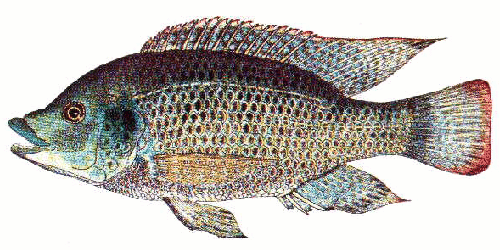 We
all call these Mozzies, but they are really another species and because
of this they fall under the basic name of Kariba Bream.
We
all call these Mozzies, but they are really another species and because
of this they fall under the basic name of Kariba Bream.
They are found in a few of the local dams (Mazwikadei, occasionally in Lake Chivero, and the Chikurubi Dams) but mainly in Kariba.
They can be caught using the normal ledger method but this is a fairly slow method, and is mainly effective during the times when the rivers have come down and the water is dirty.
During the rains they tend to move to the edges where the bottom is clean and appears to have "shelves" or steps into fairly deep water, and they are there to breed. This makes them a fairly easy target to those "in the know" as they get quite agitated when you pull a worm through the nesting area and are often hungry also, as they have been there for a while and have to wait for the food to come to them.
A very productive method is to find a "clean" bottomed bank, that shelves away in about 4 to 20 foot of water, and slowly pull the worms along parallel to the bank. Generally the bait will appear to get stuck, and if you have the eyes and feel, together with a bit of patience, the bream will start to pull back from where you thought you were stuck. STRIKE!!!!
If you do use the "dragging along the bottom" method, it is best to use a split shot and small worm sinker above it with the hook at the end, with the larger sinker sliding along the line. In this way when the fish pulls it does not feel the weight of the large sinker, just the resistance of the line and your rod.
Some anglers put the sinker all the way to the end and others a little
way up the line. This is up to you, but you will know about the bite quicker,
the nearer your hook is to the sinkers.
If you are pulling up rubbish from the bottom then you are in the
wrong place, or casting too short or too far. The
bottom must be fairly clean.
In Kariba, during the colder months and after the breeding period,
when the water begins to clear, they will move off the banks and into the
deeper trees, where you can catch them with spinners the same as the method
described for Mellies in the deep trees. Their bites are very gentle so
beware, they just seem to suck the worms off the hook.
If your hook or spinner comes back with no worms, and you
didn't feel a thing then you can be assured that the Mozzies are
around and he made you the "sucker".
You may notice that you tend to find more
of one species on "smooth" trees than on the rougher trees (Trunk been
bored to bits by caddis fly larvae). Keep this in mind if you want to target
certain species specifically or for competitions.